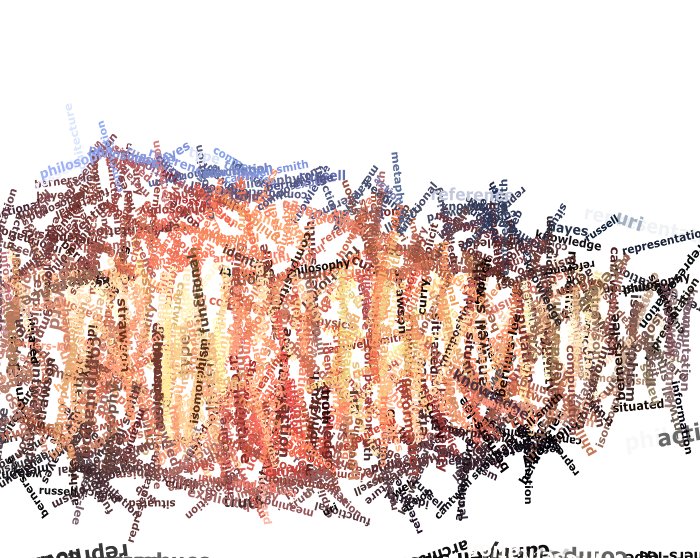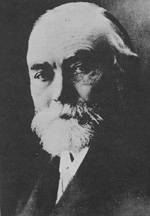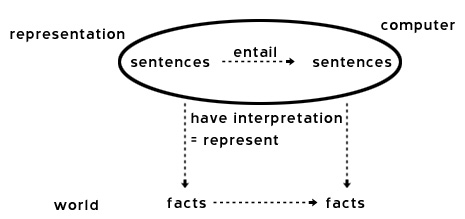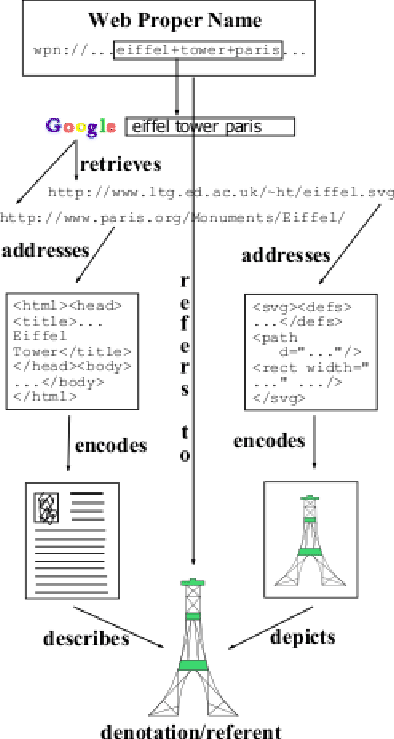






















Is a open world and universal space for machine-readable data.

To a computer, then, the web is a flat, boring world devoid of meaning...This is a pity, as in fact documents on the web describe real objects and imaginary concepts, and give particular relationships between them...Adding semantics to the web involves two things: allowing documents which have information in machine-readable forms, and allowing links to be created with relationship values.TimBL, WWW1994


Subject and object node using same URIs

Verb/predicate/Property using same URIs
None of these URIs match.
The Eiffel Tower versus a web-page about the Eiffel Tower: Isn't there something fundamentally different? And what URI do you use for the Eiffel Tower qua Eiffel Tower?
The Symbol Grounding Problem?


The URI of the web-page is clearly http://www.tour-eiffel. fr/.
Background
The Semantic Web uses URIs not just to refer to web-pages, but to things.
For the Semantic Web to work, there must be agreement from decentralized agents on what a URI.
Thesis
URI agreement must take place in a decentralized manner in an analogous manner to how humans come to agreement to terms in natural language.Approach
We're going to have use an interdisciplinary approach from two rarely connected fields: philosophy and the World Wide Web.
Information is portable, modular, public, and about something (i.e. has a meaning or interpretation).
Key Observation: Telling someone how many bits they have does not tell them what information was transmitted.
Dretske's Definition of Information Content:"A signal r carries the information that s is F iff the conditional probability of s's being F, given r and k is 1 (where k is the knowledge of the receiver)" (Dretske, 1981).

Haugeland states that the mark of a representation is the standing-in rel ationship (Haugeland, 1991).


(Clark and Chalmers, 1998)

What is the difference between using the notebook and an act of memory?
Traditional mental characteristics of concepts, belief, knowledge, attitu des, propositions is therefore extended into the environment.
Imagine Otto trying to find his way to the Museum of Modern Art, and instead of a notebook having a personal digital assistant with access to a map on the Web.

Inga can have access to the exact same map via her personal digital assistant.
Since both Otto and Inga are sharing the same representation and using it in the same manner, Inga and Otto can be said to share at least some of the same cognitive state, due to the fact that their individual cognitive states are causally dependent on accessing the same representation.
Language, and external media (including the Semantic Web) is for co-ordinating action
A name can be transmitted through time via historical and causal chains, with a name being given its original referent through a process Kripke calls baptism.

A URI is given its meaning by a baptism by its owner, such as registering a domain name.
It will mint new URIs for all named entities on the Web, with links to those names from web-pages it has mined, but no logical statements and (as of yet) no disambiguation.


Patches of sense-data known through direct acquaintance allow one to ground the atoms of logical statements or create descriptions that can form the basis for names.
The priority of reference over senseWe are also assuming the real world (as opposed to any logical idealization of it) is divided neatly into individuals (Strawson).
But how can we deal with referents in the past, or imaginary referents?
When an agent uses a URI, it is forced to "follow its nose" to the URI, download all the logical statements at that URI (or some sort of ontological closure), and accept them.
Small variation by Peter Patel-Schneider: An agent should not believe any statement that is not explicitly owl:import.


The priority of meaning over reference
Example:Hesperus has a sense ("the morning star") different from that of Phosphorus ("the evening star"), yet both have the same referent, the planet Venus.
As formalized in logic, meaning is taken to be given by interpretations that define the truth conditions of the statement.
Ambiguity is built in: The web of logical statements is the bearer of meaning, and whatever satisfies the sense of the statement could be a referent.

The amount of co-ordination needed does not need full agreement, but only the minimal agreement needed to get the task at hand completed.
How can we boot-straps URIs for things and re-use these URIs in a way that people will actually use?Answer: Use a paradigm average Web users are familiar with, such as a search paradigm.

Each "fact" then has a vote.
So we can use these "votes" to determine what the core set of socially-agreed "facts" are part of our understand.

We can then build a statistical model of the most-commonly agreed upon terms.
Not sure how to code this in RDF.Companies are trying to deploy this kind of technology...

Also view the distribution of what "facts."
Further Thesis: People will disagree of the "long tail" but agree on "top of distribution".
From preliminary results, it appears feedback does not have a significant effect contra work by Catutto et. al. in Semiotic Dynamics.
Search queries: 16 million queries
Unique Queries: 7 million
Unique People: 50,000,000
Unique Places: at least 5,000
Unique Concepts: at least 10,000
Just running users on queries retrieved from corpus and having them
Asking users if the facts retrieved from the Semantic Web are "about the same thing as the search" on a 1-4 ordinal scale (Poor, Fair, Good, Excellent) or binary?Some of the facts retrieved by the Semantic Web are confusing - like The Eiffel Tower is a noun.
Any advise?Do I create a really stupid (i.e. randomized) baseline algorithm?
Just use the results of Pagerank over SemWeb Linked Data?
Maybe testDifferent Machine-Learning Algorithms:
Is this a unified picture?
A philosophical thesis: that naming on the Semantic Web relies on minimum co-ordination required for disambiguation.
Any questions?